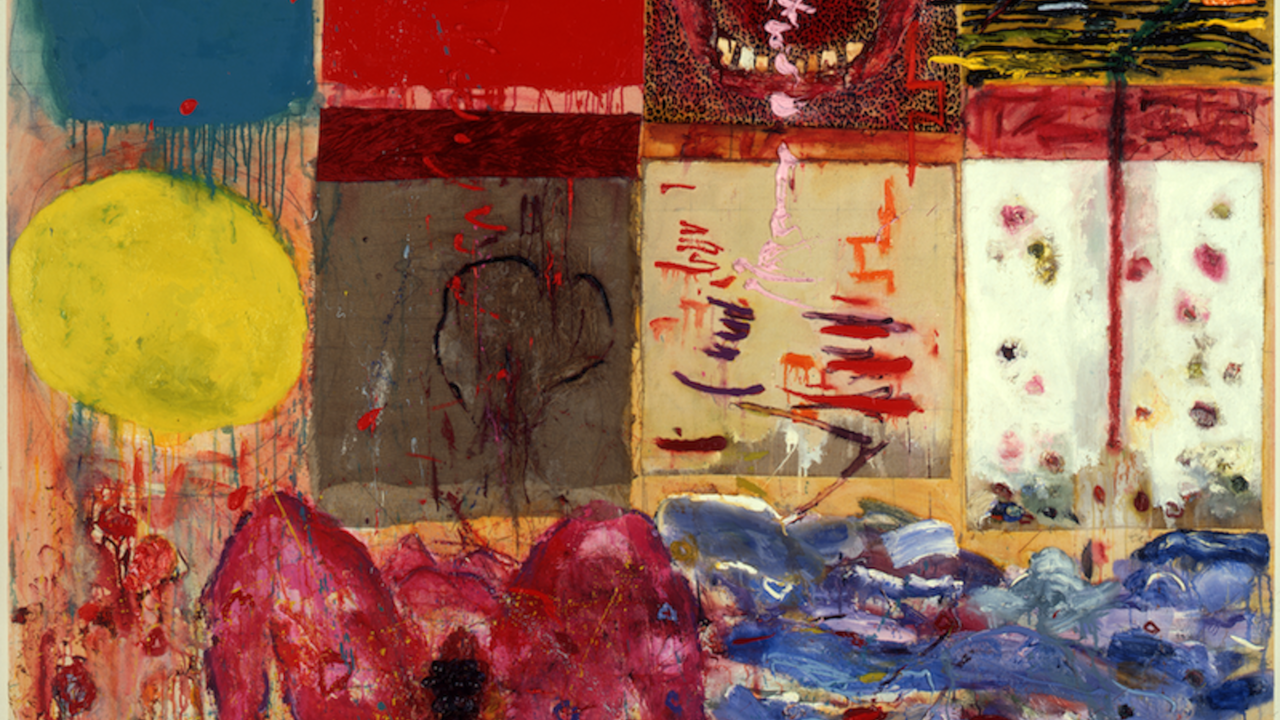From Minimalism into Algorithm
The Kitchen, New York, USA
The Kitchen, New York, USA

‘From Minimalism into Algorithm’ is a formal gallery exhibition accompanied by a programme of performances, unfolding in three phases over the course of the winter and spring. The show focuses on repetition and serialization, tracing their development from minimalist dance, sculpture and painting of the 1960s to their appearance in contemporary artistic practices. The exhibition’s iterative nature makes it nearly impossible to see in full. And although this necessarily limits the scope of a review (I write this during Phase II), such a curatorial framework elicits anticipation at every turn, while requiring us to work a bit harder to balance its material facts and productive contradictions.
The Kitchen’s gallery – a white cube set within a scrappier black box – lends the show a welcome sense of artifice. It stages the rules of exhibition-making, emphasizing the basic materials of a show (walls, time and viewership). Phase I included many alumni of The Kitchen’s long-running programme, with videos by Lucinda Childs and Laurie Spiegel providing the scores. In a black and white video documenting Work in Progress with Philip Glass (1978), Childs rehearses at The Kitchen’s former SoHo location. Her mesmerizing motions, by turns balletic and improvisational, fall in and out of synch with Glass’s music. For Spiegel’s Living Painting (1977–79), the artist developed her own software program at IBM’s famous Bell Labs. Displayed on a box monitor, the Video and Music Program for Interactive Realtime Exploration (humorously abbreviated to ‘VAMPIRE’) generates a composition in constant flux. Pixel by pixel, a radiant spectrum of colour erupts, blurs, bulges, drips and traces a slow-moving phantasmagoria set to a moody synth soundtrack.
Historically, minimalism used repetition to challenge notions of linear time and rational space. Repetition is also an essential quality of statistical algorithms that map and predict human behaviour. Childs and Spiegel employ serial repetition to experiment with the structure of choreography and digital technologies; ‘From Minimalism into Algorithm’ stages these works as rehearsals, in which bodies and paintings take on new meanings within continually evolving sets of interpretive matrices. Other works engage with this idea directly: Vera Molnar’s Lettres De Ma Mère (Letters from my Mother, 1981–90), for example, uses early algorithms to reproduce her aging mother’s handwriting. Paul Sietsema’s painting Figure Ground Study (Fashion and Arts) (2015) supplants the artist’s subjective mark with painstaking, computer precision. Technology recoups or obfuscates something human for Molnar and Sietsema, underscoring the viewer’s slippery relationship to the artworks, given the shifting material, temporal and situational contingencies of the exhibition.
With its processual iterations, the show avoids assuming a single critical position. In Phase I, a corner of the gallery featured works that all contain grids: Charles Gaines’s Shadows IX, Set 4 (1980), which deconstructs a pair of photographs into silhouetted graph-paper notations; Jacob Kassay’s Untitled (2015), a bare, poplar canvas stretcher cut to the shape of a canvas remnant from another, absent work; and Zoe Leonard’s Untitled (2015), a series of black and white contact prints depicting the shifting patterns of a flock of birds. Each work translates a set of information through a minimalist grid. It is an inspired and unexpected trio, but it may not bear the most felicity to each artist’s individual practice. Curatorially, the exhibition stages the historical shift from 1970s minimalism to the present through simultaneities and resonances that feel sometimes fateful and sometimes unnatural (the latter perhaps appropriate given the tragicomic fallibility of algorithms). ‘From Minimalism into Algorithm’ embraces these contradictions to illustrate the stakes of tactical repetition.
The performance programme reflects the influence of language in our societal shift from minimalist methodologies to algorithmic thinking. Complex linguistic systems underlie the late Robert Ashley’s libretto Quicksand (2016), choreographed by Steve Paxton, and For Claude Shannon (2016), Liz Santoro and Pierre Godard’s tribute to Shannon, the grandfather of information theory. With deadpan musical mutations of American speech or dancers following mathematically derived scores, these performances characterize language as a data-processing system in constant flux. In Phases I and II of the exhibition, Mary Lucier’s Color Phantoms with Automatic Writing (2015), a mis en scène of Ashley’s personal belongings with a video of a distorted landscape hung over his chaise lounge, is a potent eulogy to the composer’s language-play: the ghostly sound of the composer’s voice plays emanates from the monitor, disembodied and indecipherable.
When ‘From Minimalism into Algorithm’ clicked to Phase II, things shifted. Kassay’s stretcher moved across the room, replaced by a multi-coloured John McCracken monolith, Untitled (1974); Andrea Crespo’s interactive meditation on the neurological spectrum of identity, polymist: echolalic transponder (2015), took the place of Agnieszka Kurant’s glittery termite mounds A.A.I 1–4 (all 2014); and Richard Serra and Carlotta Schoolman’s video diatribe, Television Delivers People (1973), moved from the gallery to the elevator. ‘From Minimalism into Algorithm’ merges minimalism’s insistence on individual presence with the artificial intelligence of our enveloping, plugged-in, networked society. It is tempting to read the exhibition like a predictive algorithm, honing its formula through new content over time. But the curators resist this automatic characterization, even at the risk of making the works somewhat interchangeable. The show certainly requires a generous commitment on the part of the audience to see it through – and for the artists to see their work change in unpredictable ways. Within its algorithmic framework, the exhibition stages viewership as a form of labour for our technological age.
























